Archive for ‘Reading’ Category
Blending Libraries: How To Organize Books with Your Sweetheart
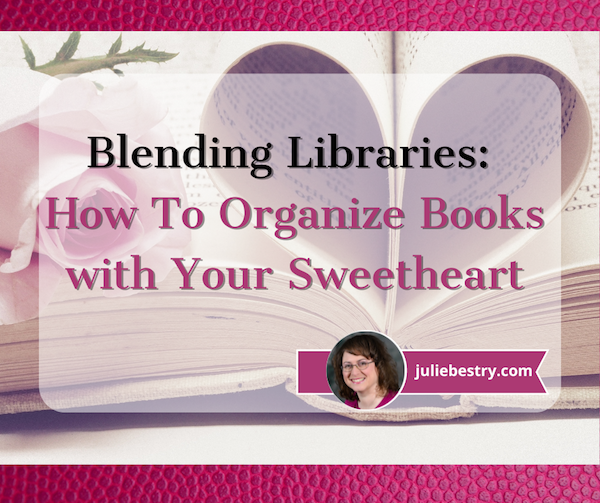
Did you know that in addition to February 14th being Valentine’s Day, it’s also International Book Giving Day and Library Lovers’ Day? As someone who’d much rather receive a bouquet of books than flowers, this makes sense to Paper Doll. And February 20th is Clean Out Your Bookcase Day!
The literary and the romantic will always be tied together. I mean, watching or hearing someone declare their love is nice, but being able to read (and reread) the declaration more than two hundred years later? Jane Austen knew what she was doing when she had Persuasion‘s Captain Wentworth’s write this to Anne Elliot.
I can listen no longer in silence. I must speak to you by such means as are within my reach. You pierce my soul. I am half agony, half hope. Tell me not that I am too late, that such precious feelings are gone for ever. I offer myself to you again with a heart even more your own than when you almost broke it, eight years and a half ago. Dare not say that man forgets sooner than woman, that his love has an earlier death. I have loved none but you. Unjust I may have been, weak and resentful I have been, but never inconstant…
The Ugly Truth
The sad truth is that not all relationships last. The Gotye song Somebody I Used to Know is heartbreaking and universal, especially when he says,
No, you didn’t have to stoop so low
Have your friends collect your records and then change your number
Paper Doll Presents 4 Stellar Organizing & Productivity Resources
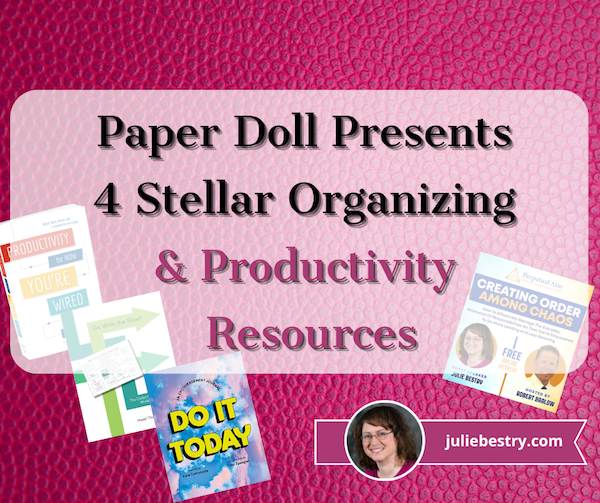
Given that it’s Valentine’s Day week, I wanted to give all of my Paper Doll readers some treats. In this post, we’ll be looking at three books covering organizing, motivation, and productivity, as well as an upcoming video interview series for taking a proactive approach to productivity in leadership.
GO WITH THE FLOW! (The Clutter Flow Chart Workbook)
If you’ve been reading Paper Doll for a while, the name Hazel Thornton won’t be new to you. We’ve been colleagues and friends for many years, and I’ve shared Hazel with you when I interviewed her (along with Jennifer Lava and Janine Adams) for Paper Doll Interviews the Genealogy Organizers and when I profiled her stellar book, What’s a Photo Without the Story? How to Create Your Family Legacy in my 2021 holiday gift list post.
A Professional Organizer’s Take on National Library Card Sign-up Month
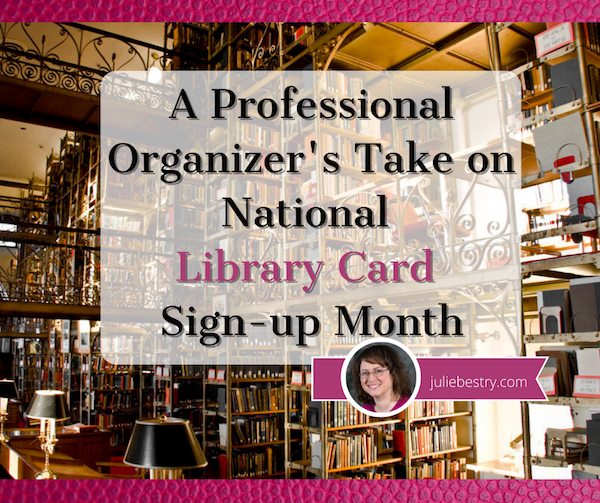
September is National Library Card Sign-up Month, and I want to make the case that library cards are your passport to a better and more organized life.
WHY PAPER DOLL LOVES LIBRARIES
I love libraries. My first real job, from my sixteenth birthday until I left for college, was as a page at the Clearfield Branch of the Erie County (New York) Public Library. My job involved helping patrons find books (back when we had paper card catalogs and no computers) and checking books out (back when the system involved using an overhead camera to take a photo of someone’s paper library card and the “borrow” card for the book).
However, the bulk of my job involved shelving books and “reading” shelves. The latter involved starting at the beginning of a section (for example, non-fiction) and making sure each book belonged after the one before it and before the one after it, per the Library of Congress classification system. I often think that this was the ideal training to become a professional organizer.
Back then, local public libraries had relatively few types of holdings: books, maps, record albums, and a truly dinky collection of audio cassettes. Libraries have come a long way, baby!
I marvel at systems I learned then, which I now use professionally, like organizing toddler books in dishpans, with book covers facing outward (record store-style) so that little hands can flip each book forward or backward without destroying a bookshelf. Because toddlers can’t read, they have no use for the spines of books, but a series of dishpans (filled with vertically arrayed, face-out books) allows tiny humans to recognize and access their favorite titles.

I have seen many beautiful libraries in cities all over the world, but my favorite is the A.D. White Library at my alma mater, Cornell University.

For most of history, libraries were closely guarded bastions of knowledge, and access was limited to those whose religious, academic, or financial positions allowed them to be considered worthy, but few libraries of significance were truly open to the public. In general, most libraries were subscription-based, where one paid for access, similar to how we use Netflix and Audible these days.
And even though public libraries had to close their doors to the public for much of the first year of the COVID pandemic, they did not turn their backs on their patrons. Most libraries offered curbside pickup; you could reserve your books online and then call (or, if your library was really fancy, use an app) to alert the staff of which pick-up parking space you were using, and diligent, masked librarians would verify your card, check you out over the phone, and deliver your “borrows” to your car’s trunk or hatchback. Most libraries also continued to offer programming for students, seniors, and other constituencies virtually.
To my mind, one of the greatest benefits of modern society is access to tax-supported public library systems. I consider my library card, my voter registration card, and my driver’s license as three keys to my sense of freedom (of intellect, of democracy, and the ability to work, play, and have an empowered life).
I consider my library card, my voter registration card, and my driver's license as three keys to my sense of freedom (of intellect, of democracy, and the ability to work, play, and have an empowered life). Click To TweetBut that’s me. You’re probably wondering why you should care about libraries, and more importantly, what this has to do with organzing.
WHAT CAN A LIBRARY CARD OFFER YOU?
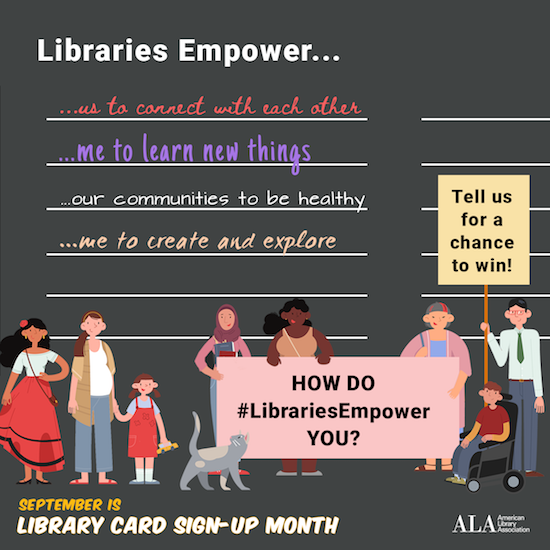
So, what magical powers does your library card bestow? Your library card, what bibliophiles and library peeps like to call “the smartest card in your wallet,” grants access to a vast array of offerings.
Items to borrow
Although some special collections and reference materials can only be read in-house, the majority of tangible items at libraries circulate. This means they can be borrowed and taken home for at least a week, and sometimes up to a month, including:
- Printed materials (and no, it’s not just books and magazines anymore, though libraries still have huge collections of those):
- print books (including large-print books for the visually impaired)
- audio books
- books on CD
- books in Braille
- magazines
- trade journals
- graphic novels/comic books
- sheet music
You can reserve materials that are currently out (or at another branch). In most cases, if your library is able to send you a digital notification of a reserved item’s availability, there will be no charge; for older libraries still using postcard systems, your reservation may be about the cost of a postage stamp.
Also, your library is likely to be a member of one or more systems through which you can request an interlibrary loan. That means that even if your library system doesn’t have a resource you want or need, you should be able to have them request it from a different system, possibly even across the country! (See? Libraries are cool!)
- Electronic entertainment and educational materials
- vinyl phonograph/record albums (though these are often in library system archives, the hipster appeal of vinyl has librarians bringing these out for display)
- CDs (whether music, language CDs, or books on CD)
- DVDs (including movies, courses, exercise, and how-to videos
- Digital materials — Your library likely gives you access to a variety of digital downloadable services through the web or a free app. So, whether you want to satisfy your insatiable desire for mystery audiobooks while you’re getting your 10,000 steps a day or suddenly need to borrow a stress-reduction video while you’re stuck in the airport when your flight is delayed, all you need is your library card number, digital device, and some decent WiFi. Not all libraries have the same services, though these seem to be the most widespread:
- OverDrive offers an absolutely massive collection of premium audiobooks, ebooks, and music that can be downloaded to your smartphone, Kindle, tablet, or computer via your browser or the Libby app.
- Hoopla has collections of thousands of ebooks, audiobooks, graphic novels/comic books, movies, television shows, and music. You can download content to your device or stream it, and it works with computers, tablets, and phones. (Personal note: I downloaded Frommer’s and Fodor’s guidebooks to Italy and the UK to use when traveling, and it was amazing to have thousand-page guidebooks at the ready with no extra schlepping.)
- Kanopy-affiliated library patrons can download or stream a wide variety of movies, including modern flicks, documentaries, foreign films, classic cinema, independent films, and educational videos.
- Less common library offerings include AcornTV (classic and modern UK television shows and movies), IndieFlix (part of the library-friendly RB Media offerings) for independent films, and other services.
As with print resources, you can usually put ebooks and audiobooks on hold if there isn’t an immediate availability. You might be wondering why, if it’s digital, there’s not endless access. That’s because libraries purchase licenses to electronic media, much the same way you purchase an individual ebook or audiobook. Buying a license for each copy of a digital work ensures (or at least tries to ensure) that authors and creators get their fair share.
- Digital educational platforms — While every library has different offerings, there are some particularly common and popular ones, including:
- LinkedIn Learning (formerly Lynda.com) normally requires a paid LinkedIn membership, but if you’ve got a library card at a system associated with LinkedIn Learning, you won’t have to pony up any money for the technology and creative courses offered for current and aspiring professionals. Learn a language, gain computer skills, or study project management or leadership development, all from your digital device.
- Infobase has collections of how-to and documentary programming, newsreels and archival films, speciality educational films in business and economics, social sciences, arts and humanities, STEM (science, technology, engineering, and math), and health and wellness. Infobase also has career skill resources for creating resumes, interviewing, and finding jobs.
- Language education — While my library system uses Transparent Language, your public library may offer Mango, Rosetta Stone, or any of a variety of other platforms to help you separate your Ciao from your Shalom.
- Academic and career preparation resources — My library system uses the Peterson’s prep materials for standardized tests and college and career searches. You may have access to other resources for the high schoolers and job searchers in your life.
- Database Access — Public libraries subscribe to an amazing array of financial, medical, legal, and other databases (including LexisNexis, PsychInfo, EBSCO — even the Chilton Auto Repair Database!) which are made available to patrons.
- Genealogical support — I don’t know much about genealogical research. (That’s why I wrote Paper Doll Interviews the Genealogy Organizers.) But libraries have everything from maps and directories to digital access to resources like Ancestry.com’s Library Edition and state archives.
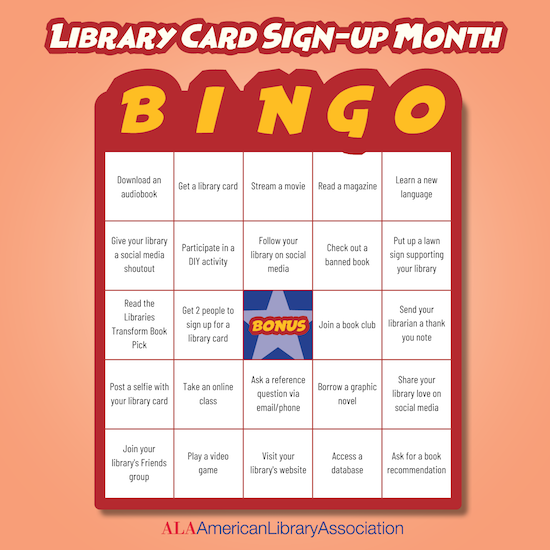
It doesn’t stop there, though. Just a sampling of some of the other things you may be able to borrow from your public library system, either for circulation or in-library use, include:
- Museum passes — Call ahead to see what museum passes your library maintains and ascertain whether you’ll need to make reservations to borrow them.
- Eclipse glasses — During the last solar eclipse on August 21, 2017, I was surprised to find that my library had arranged for loans of eclipses glasses. The next solar eclipse visible in North America will be April 8, 2024, so check with your library well before then to make sure you put a hold on yours!
- Board games
- Classic games, like chess, checkers and backgammon
- Computer and video games
- Video game controllers
- Headphones — Because it’s easy to forget your ear buds before an impromptu library trip and nobody wants to wear borrowed ear buds (ew), so go old-school with the over-the-ear kind.
- Tools — Over the last few decades, more and more public library systems have started a lending library of tools, ranging from socket wrench sets to power sanders, saws to stud finders, cordless drills to hedge trimmers. Take a peek at the visual tool catalog of what I can borrow from the downtown branch of my library.
Free (and almost free) library services
Computer Access — Almost all public libraries offer computer access for free; you’ll only pay for pages you choose to print.
Wi-Fi and Wired Internet Access — Not everyone has high speed internet access. In addition to there being a huge economic divide between those who can and cannot afford internet access, there are also infrastructure issues. Many rural areas of North America lack dependable internet and even cell service.
Because of these issues, during the pandemic students were often attending their remote classes in the parking lots of schools and libraries (which remained shuttered, but there were employees inside, keeping the WiFi going). Remote workers also had a tough time accessing essential tools. Libraries are an inexpensive alternative to setting up your workspace at the coffee house.
Tech Support — Many libraries offer free courses in basic computer and web skills. Also, some librarians are able to provide guidance on common computer issues.
Homework Help — Librarians won’t do your children’s homework, but they’re fonts of information regarding selection of the appropriate resources. Many public libraries also have homework assistance hot-lines and online homework help.
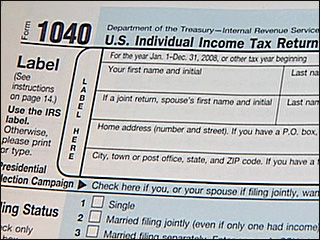
Tax Prep Assistance — Libraries don’t supply tax advice directly, but AARP and other community organizations provide volunteer, pro-bono tax preparation assistance at most branches. And even though many people file digitally now, tax forms are usually made available to patrons who want to noodle the math with paper and pencil.
Delivery — Not everyone is able to get to the library. Elderly, housebound or disabled patrons can often request to have library materials delivered to them. Contact your local library for available resources and review the offerings of the National Library Service for the Blind and Handicapped.
Children’s Entertainment — Public libraries have story hours, magic shows, movies, puppet shows, arts and craft activities, and other events to keep children engaged while giving parents some breathing space.
Quiet Spaces — OK, this isn’t a service, per se. But sometimes, you need a place to go to center yourself, read, or just disconnect. Libraries are safe, temperature-controlled, and, unless you’re sitting right next to the children’s area, fairly serene. Obviously, this is more difficult when we’re in pandemic mode, but libraries were known for their shhhh-iness long before quiet cars on rail transportation existed.
Low-cost Services
In addition to free services, libraries provide a number of services are supplied at at limited cost. These include:
- Printing
- Photocopying
- Faxing — Stop laughing. It’s shocking how often something like this crosses my Twitter feed:
Always fun to hunt down a fax machine in the middle of a pandemic because when you need a HELOC Payoff letter from @CitizensBank you first have to time travel to 1987.#thisiswhybanksarefailing
— Peter Shankman (shankman.eth) (@petershankman) October 21, 2020
- Scanning
- Notary Services — Call your library branch in advance to find out if and when the services of a notary public will be available. If a member of the library staff is a notary, you may not even be charged.
- Passport Services — New and renewal applications for passports can be confusing. Many libraries provide assistance with applications and photo services by appointment.
- Meeting rooms — Libraries maintain private rooms for not-for-profit endeavors, and the cost is usually limited to making sure the room bookings are serious. Rooms may be booked for:
- Book Clubs
- Game Groups for children and adults. (Pokémon card trading clubs having been going strong for decades!)
- Community Meetings
- Guest Lectures and Classes — Years ago, Paper Doll took courses in origami and in how to use the library’s electronic book borrowing systems to transfer books to Kindle and Nook. (I remain more proficient at the latter than the former. Folding cranes is hard!) I’ve also taught classes and workshops on organizing at public libraries, and chances are good that you can find one of my colleagues teaching similar workshops wherever you are.
Libraries around the country lend Santa suits and prom dresses, cake pans and artwork, knitting needles and selfie sticks:
18 Weird Things You Can Borrow from Your Public Library
200 Things You Can Check Out of a Library Besides Books
The downtown branch of my own public library has an entire floor set aside as a “maker space” with 3D printers, laser cutters, an HTC Vive virtual reality booth, a sewing lab, a soldering bench, Agile co-working spaces with white boards and projectors, a photography studio — and a state of the art recording studio!!!
This is not Marian the Librarian’s public library, and Chattanooga is not even a big city. It’s just one that values libraries. Check out (pun intended) what your own library system has to offer.
SO HOW DOES GETTING A LIBRARY CARD HELP YOU GET AND STAY ORGANIZED?
Maybe I have convinced you that libraries are the bees’ knees, but you still don’t get what it has to do with organizing?
Self-decluttering
From a professional organizer’s perspective, the best thing about libraries is the opportunity to allow yourself to trust that you need not maintain the entire world at your house.
Those four hundred issues of National Geographic making your guest room floor buckle, but which you never approach except to dust? The library has them, too, for whenever you want to learn about the mating habits of the elephants of the Serengeti, but you’ll never have to dust them. (The Nat Geos, I mean, not the elephants. Well, those too.)
Of course, I’m not saying to give up purchasing books and magazines, but understand that there’s an alternative to becoming an accidental collector of books you’ll never read (or never read again).
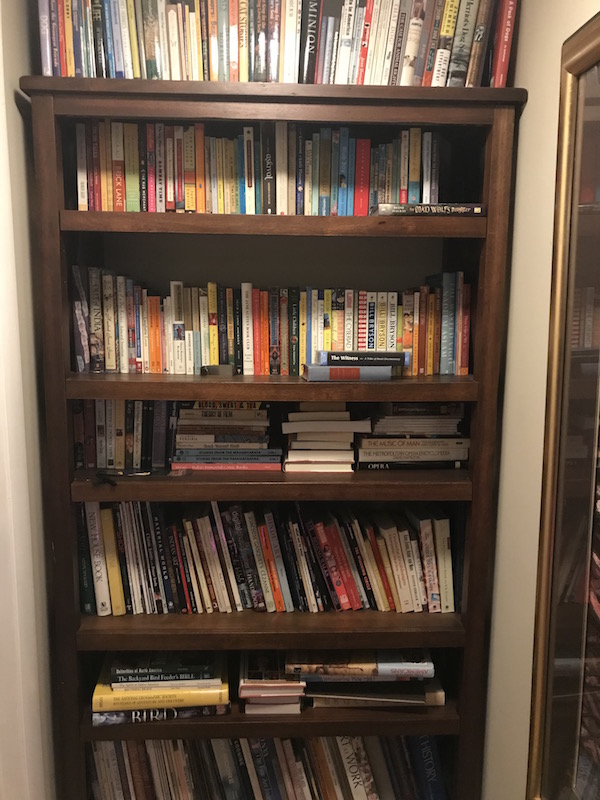
If you are overwhelmed by clutter in your space, but have a voracious hunger to read (or listen to music, or watch movies), check your public library’s collections first before running off to Amazon or your local indie bookseller. (But do support your local indie booksellers when you find things you want to own. This has been a hard time for them, OK? OK!)
Having a library means you can have access to any printed book, ebook, or audiobook, or tangible item (DVD, CD, graphic novel, magazine) without it permanently taking up residence in your home. Clutter often develops because we have too much stuff and no place to permanently store it, and we keep it forever because we don’t have the time or inclination to deal with it.
Library resources come with a built-in decluttering mechanism: due dates! Sure, you can renew things online, but in general, things need to be returned to the library. You don’t have to make the difficult decision as to whether it should stay or go because it’s not yours! It belongs to the library.
Or, if you prefer, think of it as yours, but stored (and dusted, repaired, and maintained) by the nice folks at the free (with your tax dollars) self-storage location called The Public Library!
And you don’t have to worry about digital items you borrow. Ebooks, audiobooks, movies, and music all “return themselves” automagically.
Just make sure you develop a system for keeping track of the tangible items you borrow. I recommend having one bookshelf or counter in your house where you keep all library items. If you have kids, help them get in the habit of returning items to that shelf or space when they’re not using them. (Oh, and let your kids help you get in the same habit. Kids love “catching” parents neglect an organizing task, and it helps reinforce the standards you’re trying to teach them.)
Money-saving
Rather than spending lots of money for books you’ll only read once, or perhaps not even finish, or for accessing any of a huge variety of tangible and digital resources, you can take advantage of the benefits of the public library.
Adore a book or piece of music beyond measure? Consider the library experience to be your free ice cream taste test; then purchase it with the knowledge that it’s something you love and will keep forever and share with others. But you don’t have to shell out money for entertainment and educational experiences you’re not sure are the right fit. And you don’t have to feel guilty, because you know the authors and creators will still be getting paid through the system of library licenses.
Still not sure about the benefits? How about saving and organizing those little green pieces of paper in your wallet? This simple form will automatically calculate the financial value of your library card in terms of annual savings. (Of course, the cognitive, emotional, and societal values are priceless.)
SO GET YOUR LIBRARY CARD
I always ask new clients a variety of questions to make sure they have life essentials: “Do you have a calendar? A file system? A will? A fire extinguisher?” On the advice of my friend, internet-famous librarian extraordinaire Jessamyn West, I also ask, “Do you have a library card?”
I’ve even been known to drag friends to sign up for a library card when I visit them in their new cities. (Shoutout: Hey, Chris, I’m looking at you!)
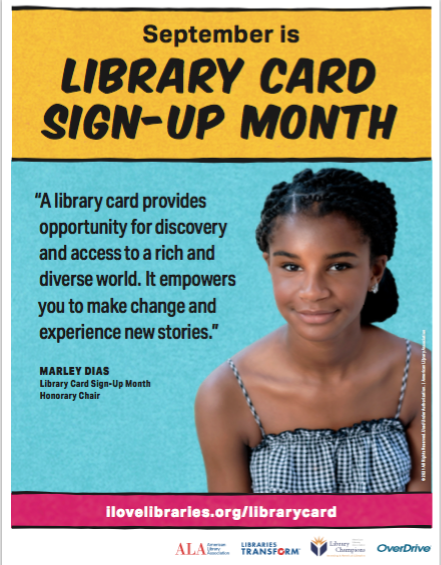
National Library Card Sign-Up Month is the perfect time to get a card for yourself or your kids.
1) Locate your public library.
2) Fill out an application, available at your branch or on most library web sites.
3) Show valid ID with your current address. If you’re new to town and don’t yet have a photo ID bearing your address, most libraries will accept two items showing your name and street address (but not PO box), such as current utility bills (e.g., telephone, gas, electric or cable), voter registration cards, or other mail with postmarks from the past 30 days.
4) Use your new library card often. Plan a weekly visit with your family and explore your library’s offerings. Develop a ritual for going to the library and your children will grow up appreciating all that libraries have to offer. Let your kids help you mark down due-dates for returning tangible items.
5) Set up a library shelf in your house where all the items you borrow from the public library “live” when they’re not being read or used. Having a set location where library items belong when not in use prevents them from going missing and assures you’ll be able to return them on time.
Happy National Library Card Sign-Up Month!
Paper Doll Peeks Behind the Curtain with Superstar Coach, Author & Speaker Leslie Josel
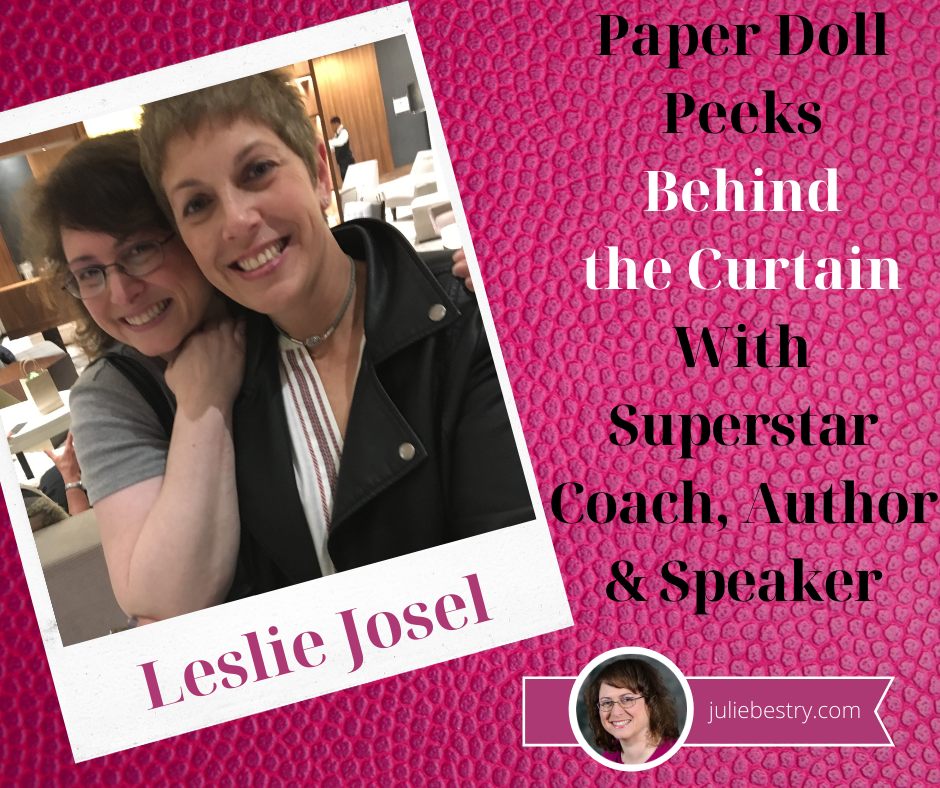
Today, we’re talking with friend of the blog, Leslie Josel. You may already know Leslie from her business, Order Out of Chaos, and her various adventures in productivity. Her newest book was released this month. In this post, we’re going to peek behind the curtain on this multi-talented expert on ADHD, student procrastination, and getting everyone around to her to sit up and take notice of what she has to say.
Leslie, we met almost a decade ago at a NAPO conference, but we almost met at college. You and I missed each other at Cornell University by just a few months in the 1980s, the decade of big hair and oversized Firenza sweaters. Could you tell Paper Doll readers about your early life, college years, and the start of your professional life? How did they prepare you for a career as a professional organizer and ADHD productivity coach, as well as inventor, speaker, and published author?

I so wish we had met met at Cornell! That would have been fun. To save your readers from a long story, I’ll share this. I was a Human Development & Family Studies major. And not until I started my business did I pull all that old learning out of my brain. Trust me, it had laid dormant for many years. And I really believe it’s why I focused my business initially on the chronically disorganized, hoarding population, and of course, ADHD families.
For me, I was less about organizing and more about the human dynamics of it all. And if I’m being completely honest, I never really liked “organizing” and if I’m being really honest, I wasn’t that good at it. I was much better at helping individuals understand the root of their pain and things like that. Which in hindsight makes sense of why I stopped “organizing” years ago and went the way of coaching. And when I was a sophomore, I was required to take a public speaking class. It was like the mother ship calling me home. I LOVED it! I liked engaging on that level. And I guess I was pretty good at it since the professor asked me to TA the class the following semester.
And one other fun fact. My mom died when I was very young — ok, that’s not the fun fact. But my dad really raised me as a single dad. And he used to say to me ALL the time, “If you can write and you can speak in front of a group of people, then you can do anything.” Probably that was more true back then, but it definitely focused me. I always wrote in every job I ever had, now that I think about it. I was a speech writer for the head of an entertainment company. I was a publicist right out of school and I was ALWAYS the one given the writing assignments. It was just a natural outlet for me.
What would you say was the turning point that helped you identify your true calling and fine-tune what you do?
So, organizing is not really my true calling. But it helped me get to where I am today. Organizing was a way to have calm in a life growing up that was anything but. My mom was terminally ill my whole life so things in my life and home were out of control. Systems and lists spoke to me. It was always what did best. Give me the big project and I loved it. Keeping on top of all the moving parts was like a big puzzle for me.
But it wasn’t until my son was 5 that my true calling was presented. He was diagnosed with ADHD, and you need to remember there wasn’t anything out there like there is now. There was no “internet,” no magazines or conferences, things like that. I had to rely on my own instincts and gut to figure out how to untangle his world.
You can read my whole story on my site, but I redid my whole house top to bottom so he could function and thrive at his best. A friend saw what I did, sent me to a patient of hers, and two weeks later I got four calls asking me to come do what I did in their homes. I turned to my hubby and said, I don’t do this for a living and he said, “You do now!” And that’s how I got started. Going house to house by myself working with families to set up systems and structures to help their children with ADHD. Remember, organizing wasn’t a whole thing yet — this was 2004 — and organizing ADHD even less so.
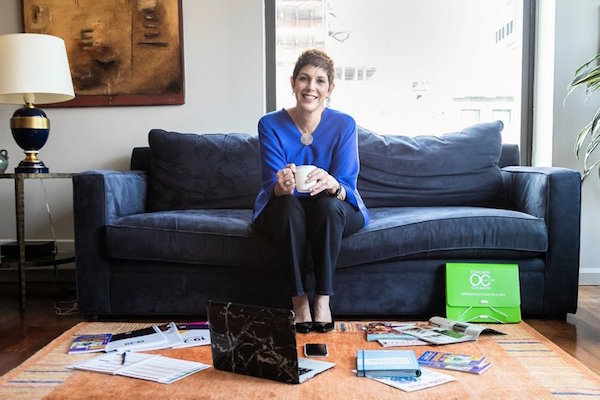
© 2020 Order Out of Chaos
Now 17 years later, I’m an academic/life coach for teens and college students with ADHD and LD [learning disabilities]. And my son is 22. So you might say Order Out Out of Chaos and Eli have grown up together. But becoming a coach for both kids and parents was the missing piece to my “journey.” It allowed me to make my business virtual, serve a global audience with a wide range of products and programs, and connect with those that need the most help.
So if I were to say what the turning point was for me — it would be two things. Becoming a coach and turning my business into a virtual one. Life changing.
Until recently, you were probably best-known for inventing the multi-award-winning Academic Planner: A Tool for Time Management. Congratulations on winning the 2020 Family Choice Award, honoring the best products for children and families, by the way. How did your stardom as an inventor come to fruition?
Seriously, Julie? There is no stardom when it comes to inventing planners! Trust me when I say I don’t have a superpower when it comes to this. In fact, fun fact #2, I’m actually very conservative when it comes to my business. So inventing the planner was born out of a frustration and a need. And I think most of you can understand that. How many times have you said, “I wish there was a…” to solve whatever problem you had?
Leslie Josel tells Paper Doll, 'There is nothing sexy about inventing a planner!' Click To TweetSo there is nothing sexy about inventing a planner! I couldn’t find what I needed to teach kids “how” to see their time. And that’s a biggie when working with kids. So I ordered every planner that was on the market back then and put them all in my basement! I should have taken a picture! And the sad thing was they were all pretty sh***y when it came to giving students what they needed. So I started cutting from one, pasting to another. You get the drift. Then I had my assistant at the time (who had a graphic design background) make a prototype, then ran some off at the local copy shop and gave them to my local clients. And friends started calling…and then friends of friends. So I went back, made some tweaks and made some more. And it kept going!
The one very smart thing I did at the very beginning — OK, here’s Fun Fact #3 — is send them to everyone who was in my NAPO Student SIG [Special Interest Group] to get their feedback and to offer them free copies if they wanted them. That was huge. The reaction was extremely positive. And that’s when I realized I was on to something. So I got smart. And that means to know you know NOTHING about bringing a product to market, pricing it, etc. So I hired someone to help me firm up some of that stuff, get it patented it, price it. The rest I figured out on my own. And seven years later we sell over 100,000 planners all over the world to schools, students and stores.
What is really depressing about all this is nothing has really changed in the academic planner market. The category is still pretty sh***y when it comes to companies focusing on what a student truly needs. Slapping a new cover on an old style does not make a new planner intuitive to students. We say about ours: No Filler. No Fluff. No word of the day. A planner that does what it says it does. Plan Time.
And I’m REALLY proud of that, since I came up with it! OK. Time for FUN FACT #4. The use of planners, paper products and academic ones rises each year approximately 10 to 15%. And the biggest group that uses planners? College students!
A few answers to questions I always get asked:
- NO to an app!
- NO to an adult planner! (Lots of adults use our small size since it is really customized.)
- Yes, I’ve been approached by a major company to sell, but the deal fell through.
- And yes, another company tried to rip my design off. We sued and won! Being married to an attorney has its benefits! 🙂
But all kidding aside, the biggest OMG moment for me was the first year we hired a fulfillment service to pack and mail. The first two years, we packed planners in our basement. And at the end of that second year, my family held an intervention. Seeing pallets after pallets being moved into a warehouse for filling orders was the most “Are You Freakin’ Kidding Me?” moment. I was exhilarated and nauseous all at the same time.
Your new book, How To Do It Now…Because It’s Not Going Away is not your first rodeo in publishing. You’re the author of What’s the Deal with Teens and Time Management?, and before that, you partnered with Susan Weiner on The Complete Diabetes Organizer. How did you come to write How To Do It Now…Because It’s Not Going Away, and was there anything different about this writing or publishing experience from what you’ve had before?
So you know that how this came to be was all you! And I will forever be grateful for your generosity. Fun Fact #??? Julie introduced me to my book developer. [Editor’s note: I’m blushing. But it was obvious from the first conversation with that publisher that Leslie was the ideal writer for the project.]
So here’s the Reader’s Digest version of the story. The last book I had written was in 2015 and it was geared to parents. I liked that book, but to be very honest I didn’t love it. I was held to a certain number of pages, format, etc. In 2018, I knew it was really time to write another book and the book I so wanted to write was for students. I spend all day every day with them. I know this population really well. I wanted to cut out the middle man, which in this case would be their parents, and talk directly to them. To represent them respectfully. To let them know that someone was truly listening and understood. To speak to them the way they would want to be spoken to. So this whole writing experience was super different from what I was used to.
My last book was geared to parents. My Dear ADHD Family Coach columns are geared to parents. Even the articles I wrote for Family Circle were geared to parents. Being able to write for students was very freeing. I knew I had to speak their language. I knew I had to bring in all my student stories so anyone reading the book could identify. I knew it had to be real. NOT judgmental. And funny! So in some ways, this book was super easy to write. The greatest compliment I get after someone who knows me reads this book is that they feel like I am speaking directly at them.
And working with a publisher that knew the YA [Young Adult] space really well was beyond a dream. They let me do my “thing.” They didn’t edit my natural voice. They let me get creative with the chapter titles, the classroom confessionals, and all the funny stuff in the book. In other words, they trusted me. And in turn I trusted them.
The writing experience is different for every author. In the lingo of NaNoWriMo, there are plotters (people who outline) and pantsers (those who write by the seat of their pants). What are you? Do you think you apply the anti-procrastination advice you give in the book to how you actually wrote the book?
I had no choice but to be an outliner. My publisher demanded it. And that was hugely helpful. It helped me craft the narrative and be very deliberate in my writing. So—and sit down for this one—I only had two months to write the book and during THE busiest season of my business. I wrote the time management chapter over Memorial Day weekend of 2019. I was given notes and approval to keep going two days later with a deadline for my first draft for August 1st. NO ONE should ever write a book like that.
I wrote the book out of order, literally. Made deadlines for myself along the way. But it wasn’t just the chapters I had to write. I had to have all the apps, all the resources, all the student stories, all the classroom confessionals, everything. It was insane. I hired my son to manage the classroom confessional portion. He wrote up 20 interview questions, reached out to all my students on my behalf, followed up with everyone to get all the answers back, and then picked the best answers for the book. My daughter helped by taking every app and every resource I wanted to include to make sure they were current, etc. My husband proofread every chapter, giving me edits and notes when something didn’t make sense or needed more context. I would never have gotten through by the deadline if I hadn’t had their help. I did not involve my Order Out of Chaos team, since we were also in the middle of back-to-school season and they had to literally hold down the fort. Procrastinate? Not on this! Who had the time?!!
But I will say that I let myself use the advice I give to my students. I wrote the book completely out of order. Meaning, I wrote chapter 2, then 7, then 4, then 8. That type of thing. And I wrote the first chapter last. This helped me stay unstuck.

In your column Dear ADHD Family Coach for Attitude Magazine and in your previous longtime gig as a contributing parenting writer for Family Circle Magazine, you wrote for adults. In How To Do It Now…Because It’s Not Going Away, you’re talking to teens and college-age young adults. Which do you find easier? Why?
I think I answered this in the question above. But I will say this. Kids can smell bullsh*t. So you have to balance being overly nice and supportive with being fair but calling them out on their bullsh*t. And I think that is my super power after all these years.
What have readers been telling you is their favorite advice or anecdote from the book? What is YOUR favorite part of the book?
On a macro level, what’s resonating with people are the student stories. Everything from the student who works under the kitchen table to the college student who writes his assignments on paper towels. Parents are identifying with these stories as they are seeing their own kids in them and students are seeing themselves in these scenarios, too. How can you make up a story about a kid who writes on paper towels! Seriously?
Leslie Josel tells Paper Doll, 'You can procrastinate and that doesn’t make you a procrastinator.' Click To Tweet
On a micro level, it’s the concept that you can procrastinate and that doesn’t make you a procrastinator. So to get serious for a minute, most of these kids have been told horrible things about themselves or they think them on their own. They have been told they’re lazy or stupid or worthless. And right at the beginning of the book, I address this and squash this. Huge reaction to that.
And my favorite part of the book? God, Julie that’s like picking my favorite child. I would say the personal stuff — like Eli and Maddie’s own stories, and especially Eli’s quote right at the beginning. It sets up the whole book just like that. [Author’s Note: Eli’s quote is at the beginning of the introduction. You’ll have to read the book to hear what Eli has to say, but it’s a doozy of a change in mindset!]
Leslie, you’re a Renaissance woman—you work with clients, write, do public speaking and webinars—but when you aren’t busy being Leslie the Expert, what’s going on in your life?
My business takes an enormous amount of my time. So if you had asked me this question back in February, I would have said travel. My husband and I have a lot of wanderlust in us. We both travel a lot for our respective businesses and then on our own, with friends and with our adult children whenever we can. We are very fortunate that we can do what we do to some degree no matter where we are. Remind me to tell you the story of when I gave a webinar sitting on the bathroom floor in my hotel in Dublin. [Author’s Note: Please let us know in the comments if that’s a story you need to hear!] I wouldn’t have it any other way.
So, traveling was all consuming until March. It is seriously a hobby and a passion. Before the pandemic hit, if I was “home,” you would find me at a concert or broadway show. (My hubby is in the music business.) The perks of living outside of NYC. Two adult children that like hanging with their parents and I wouldn’t have it any other way. A hubby who I not only love but really really like. He’s my true partner in every way. And a posse of girl friends who are always up for a walk, yoga class, a cocktail, frozen yogurt, or a GNO. And if I need a true escape I swim, read entertainment magazines, and watch some fun television.
To get a sneak peak of the first chapter of How to Do It Now…Because It’s Not Going Away, access Leslie’s Spotify study playlists, and read reviews of the new book (available on Amazon and Leslie’s site), visit the book page at Order Out of Chaos. You can also find Leslie on YouTube, Facebook, Pinterest, and Instagram. And you can read my review of the book on Amazon, Goodreads, and the Book Resources page here on my site.
Affiliate Disclaimer: This site uses affiliate programs to help generate a supporting income which allows us to continue our work and provide you with the best overall experience and valued information. If you have any concerns, we suggest you do not click on any affiliate links found throughout the website or blog. If you are uncertain as to the resulting link’s destination, you may hover your cursor over the linked material to see where it goes. We will always provide you with a company or agency name, which you can type into any search engine in order to reach the site independently of our links. For more information, please see the Affiliate Tracking section of this site’s Privacy Policy linked at the bottom of each page.
12 Ways to Organize Your Life to Read More — Part 2 (Reading Lists, Challenges & Ice Cream Samples)
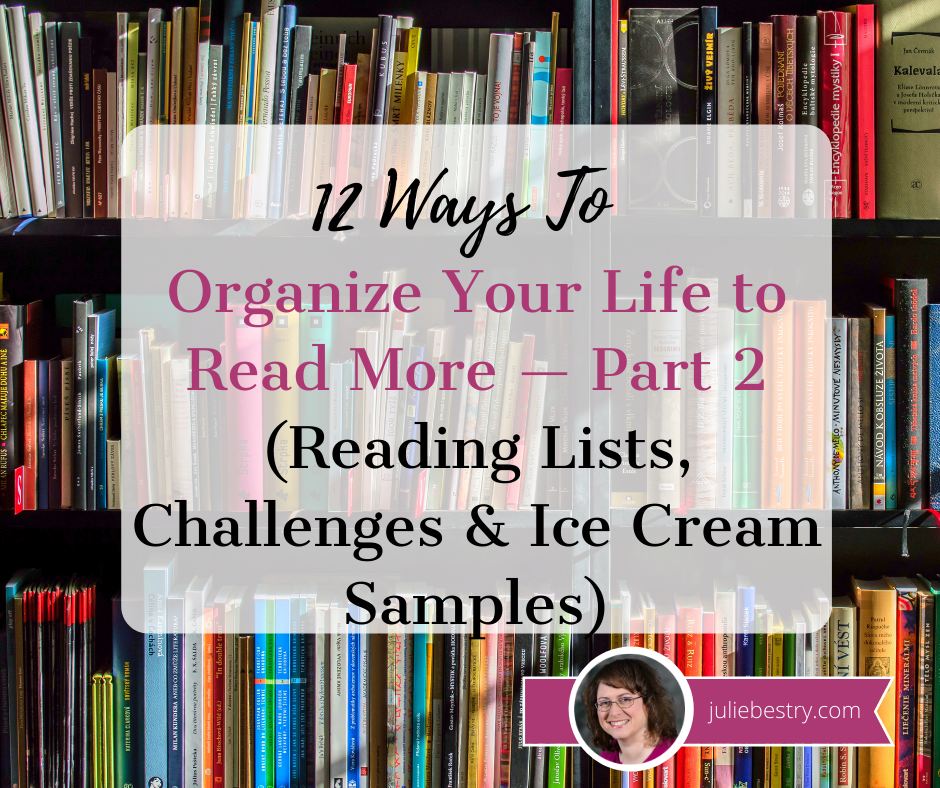
Last time, in 12 Ways to Organize Your Life to Read More — Part 1, we discussed the first six ways to create order in your space and schedule so you can read more.
- Gather your TBR (to be read) collection.
- Schedule your reading time.
- Create physical space for reading.
- Replace a habit with reading.
- Read with others.
- Be part of a cultural experience.
Today, the list continues with six additional ways to encourage reading more of the things you want and get more enjoyment out of the experience.
7) Develop a reading list with great recommendations.
Having that TBR list of books is helpful if you’ve already laid in a supply of next-up titles, but what if you don’t know what you want to read? Goodreads’s Listopia is a great source for pre-existing lists collated from site-wide recommendations, everything from compelling suggestions in Best Time Travel or Best Non-Fiction of 2019 to celebrities’ (and other individuals’) own curated lists, like James Patterson Recommends His Favorite Thrillers to Glennon Doyle’s Books for Challenging Times.
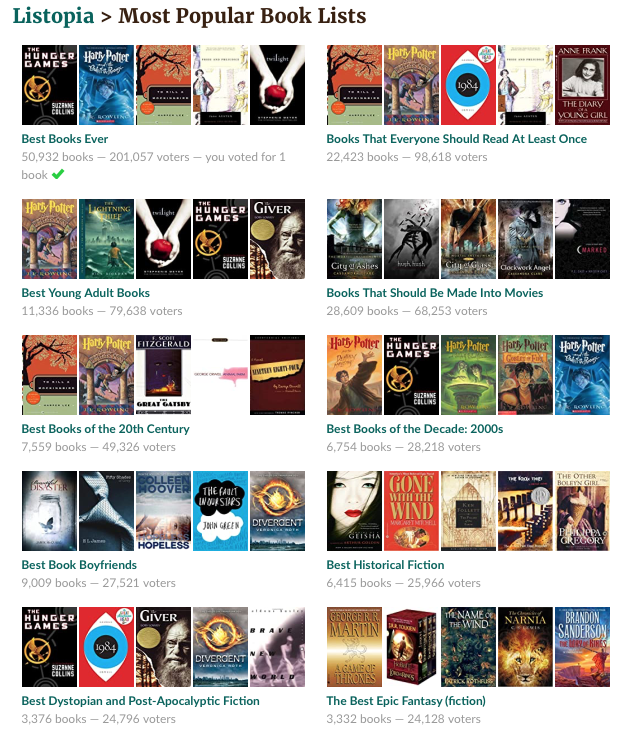
Public library websites have reading lists developed by librarians. And just Googling a topic you’re more interested in will help you find great options. For example, when I typed “anti-racist reading lists” into the search box, I got over 33 million hits, and just selecting the top three yielded sources for a good start:
- New York Times: An Anti-Racist Reading List (compiled by Ibram X. Kendi)
- Phoenix Public Library: An Anti-Racist Reading List (compiled by librarians)
- WBUR-FM, Boston: A Reading List on Race for Allies Who Want to Do Better (compiled by Arielle Gray)
Famous people have famous reading lists. Previously, presidents have made their reading lists public, such as here, and here. Productivity author James Clear maintains a website called 100 Good Books To Read, which recommends far more than 100 books, with lists broken down by category. Billionaire Bill Gates maintains an entire section of his GatesNotes blog for discussing the books he recommends.
There’s even a website called The Reading Lists, collating everything from “Best Tear Jerkers” to “The Most Important Books on Dinosaurs” to “Must Read Books for Aspiring Writers.” Whether you want to find more books like the ones you love, or you want to explore a new genre, there are book lists to serve your needs.
You can also get great recommendations from blogs, podcasts, and apps. For example:

By The Book Podcast – Imagine if you combined a self-help reality show with a podcast about book reviews. For each episode, podcast veterans Jolenta Greenberg and Kristen Meinzer (along with their long-suffering and fan-favorite husbands) summarize a self-help book and then live by the precepts of that book for two weeks.
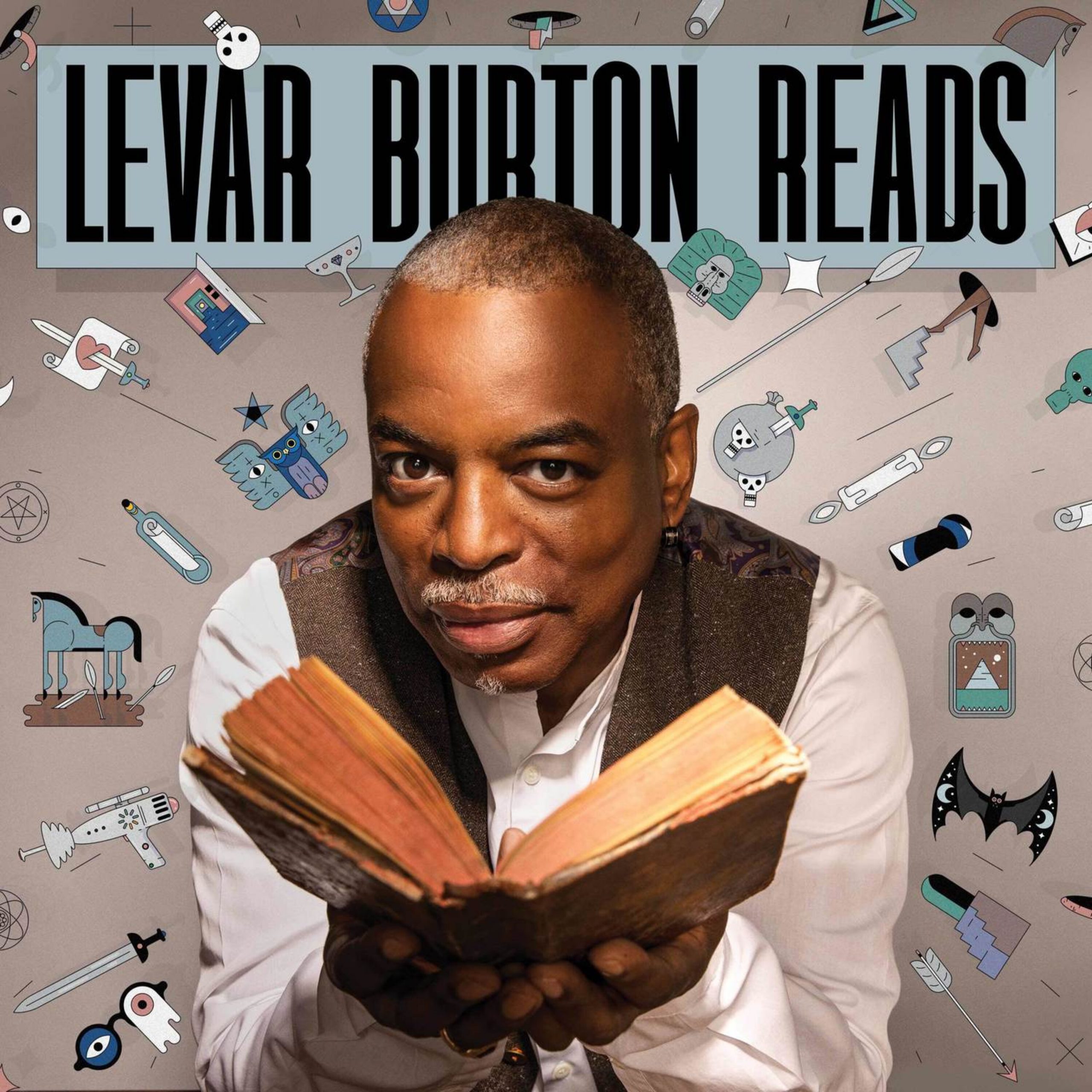
LeVar Burton Reads – Yes, the same Reading Rainbow star who spent 26 years helping get kids excited about reading has an inspiring reading-themed podcast for adults. In each episode of LeVar Burton Reads, now in it’s third year, Burton reads (in the same soothing voice that captivated generations) a piece of short fiction he chooses himself, in genres ranging (in his own words, in a 2017 interview with The New Yorker), “from fantasy to mystery to comedy and, of course, my go-to, science fiction.” Authors represented on the podcast have included Octavia Butler, Joan Aiken, Ray Bradbury, N.K. Jemison, Neil Gaiman, Haruki Murakami, and more.
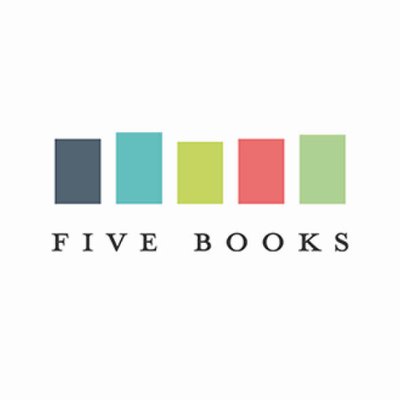
Five Books – What if, when you wanted to read a book, you could ask experts on that topic what you should read? That’s the premise of Five Books, with an archive of more than one thousand interviews and five thousand book recommendations, offering two new interviews each week. For example, humorist Andy Borowitz gives his list of the best books on comic writing, while biographer Andrew Roberts offers up the best books on Napoleon.
Non-fiction topics cover art, business, economics, history, health and wellness, language, philosophy, politics, psychology, religion, sports, technology and more, and include titles for children as well as adults. Fiction-related recommendations run the gamut of genres from classic and contemporary literature to literary criticism, from crime and mystery to romance and horror, and from poetry to science fiction.
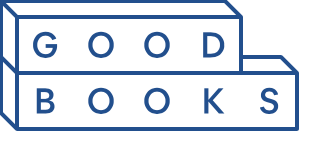
GoodBooks – This site describes itself as “Books recommended by successful people” – with 8500+ recommendations from “the most successful and interesting people in the world.” A little self-aggrandizing? Maybe. But the experts hail from media, technology, journalism, science, education, venture capitalism, design, entrepreneurship, activism, and other professions, and they recommend titles ranging from classics to some of today’s best-sellers, and there’s even a Top 100 most-recommended list. (Is 100 too daunting? How about just enough titles to read a book a month with GoodBooks’ top 12 list?)
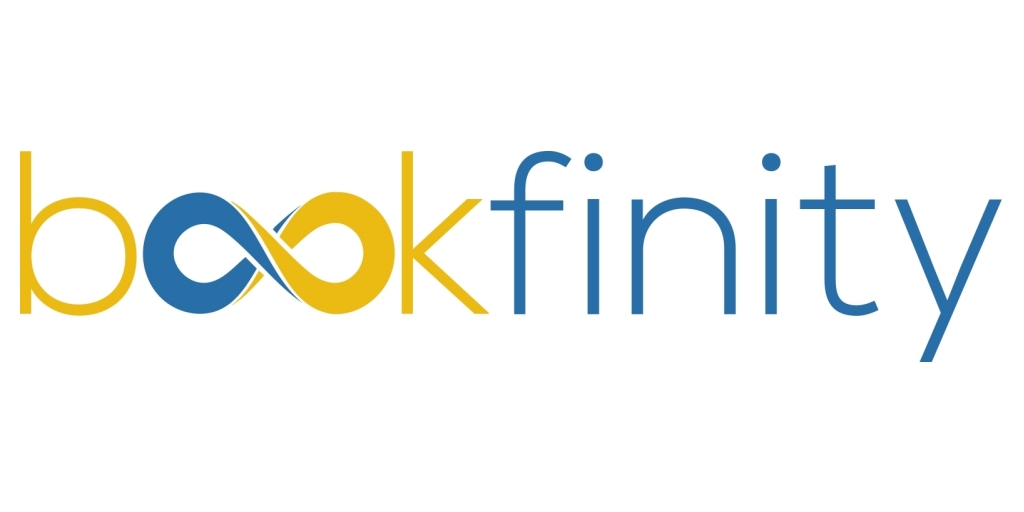
Bookfinity – Perhaps you’re less interested in what the experts like to read and would prefer a fairy godparent to zap up the perfect read for you? Bookfinity uses the quirkiness of those social media “Which Marvel superhero are you?”-type quizzes to create recommendations customized for your reading preferences. (One note: you must create an account to access recommendations.) Once in the system, you can rate whether you like or hate Bookfinity’s recommendations for you, improving the algorithm.
8) Change formats.
I am a book snob. I like the weight of a real book, and want to be able to flip back-and-forth, check the “feel” of how many pages are left until the end of the chapter or the book, and even stop to look at the author photo. I tend to forget about books I’ve downloaded to the Kindle app on my iPad, whereas my To Be Read shelf is near and always reminding me what’s next. And honestly, unless I’m listening to an audiobook with a compelling plot, I tend to daydream.
But I grant you – sometimes, you just need to change it up.
You can’t (safely) read a book in the bathtub, but you can put your Kindle (or other ereader) in a zip-lock bag and read until your fingers get prune-y. Your local bookstore or even online shop may run out of stock, but ebooks and audiobooks are available at the click of a button.
During the first four months of the COVID-19 pandemic, my public library was closed and I couldn’t get my usual hefty pile of books. But you know what I could do? I could sit in my PJs at 2 a.m. and borrow digital copies of books at no cost by using my library’s digital platforms like Hoopla, Overdrive (accessible via the Libby app), and RBDigital to acquire books, ebooks, and audiobooks. (They also have magazines, comic books, albums and movies.)
And sometimes, you need a little support. Storyline Online, sponsored by the Screen Actors Guild, features celebrities (like Rita Moreno, Lily Tomlin, Rami Malek, and Kevin Costner) reading children’s books. That might be just what you need to save yourself from another night of reading your tiny human Hop On Pop on repeat, perhaps even giving you time to read your own books.
Experiment to see what book formats you find compelling. If listening to a novel while you cook or drive means you’ll get to submerge yourself in a story you’d otherwise miss, isn’t it worth trying?
9) Track Your Reading
You may wonder how tracking your reading helps you read more. But the more you measure your effort, the more inclined you are to improve that effort. Also, keeping track of what you’ve read prevents you from accidentally buying or borrowing (and then reading) the same book more than once.
The no-effort way to track your reading is to keep your read and to-be-read books separate. Once a book is completed, move it to the “read books” area. Of course, I wouldn’t be much of a professional organizer if I didn’t encourage you to let go of books you’ve read and have no intent (or desire) to read again. But if you let go of books to prevent them from piling up, there’s not much of a record of what you’ve read. However, there are other options.
Keep a reading journal. Take quick notes in your phone or keep track of your reading habits, favorite quotes, and thoughts on what you’ve read in a bullet journal.
Log your books digitally. Opt for something simple, like a sortable Excel or Google spreadsheet. There are also myriad book journaling apps, like Book Log, ReadingList, and Litsy.
Track what you’ve read in a website that lets you log, rate, and review books. I like how Goodreads lets me create a pathway for tracking books. When I hear of a book I might like to read, I enter it in the search box; when it comes up, I click “Want to Read.” If I start reading, I change the status to “Currently Reading” and later to “Read.” Then I can give it from one-to-five stars and write a review.
Marking the book as “Read” puts it into a chart of “My Books,” which I can sort by title, author, average rating, my rating, date I added it to my account, and date I finished reading it. I can also view and edit my reviews from this page, and change the virtual shelf on which I’ve put it. You can add your own shelving categories. Mine include, “Books by My Friends and Colleagues” and “Books That Would Make Good Gifts.”
Logging books comes in handy when someone asks me what I thought of a book. One of my favorite fiction genres is time travel; when you read a lot in one genre, it’s easy to confuse the plots, so seeing my ratings and reviews helps. It also helps me find titles I want to recommend. Recently, a friend told me that her daughter likes reading “art theft” books like Chasing Vermeer. I remembered that I’d accidentally read a book for younger readers along those same lines, but couldn’t recall the author. One quick scroll through the my reading list and I found Walls Within Walls, which I’d read in 2011!
10) Participate in Reading Challenges
I walk for exercise, but until I got a Fitbit, I never stuck to one regimen for very long. For a while, just trying to hit 10,000 steps a day kept me at it, but at the start of 2020, my best friend and I started doing the Workweek Hustle Challenge, where we “compete” (gently) against one another on steps counted. Her son recently joined in and invited us to to achieve certain measures of steps, miles, and minutes of exercise on Fitbit’s BINGO card contests.
Similarly, while I enjoy practicing my Italian lessons on Duolingo, keeping my travel partner’s score (each week, if not daily) gives me that extra boost.
Goodreads runs a challenge where you announce to your friends how many books you intend to read for the year; watch your ticker count up as you read, and note whether you are “ahead” or “behind” for the year. Book bloggers run some pretty famous challenges where you can amass different types of reading experiences: read a book in translation, read a book in a genre you’ve never explored, read a book with fewer than 100 (or more than 1000) pages, etc. You might want to try:
- The Modern Mrs. Darcy 2020 Reading Challenge
- 52 Books In 52 Weeks (multiple challenges)
- World Reading Challenge: Books Around the Globe 2020 (from Tale Away)
- The Master List of Reading Challenges from Girl XOXO (with a fancy and complex tracking spreadsheet to log all of the reading you do for all of the challenges in which you participate)
- Epistolary Reading Challenge (I love a book written in letters!)
- Newberry Reading Challenge (to read Newberry- & Caldecott-winning children’s books)
- Pop Sugar Reading Challenge (There’s also a Summer 2020 challenge.)
- Penguin/Random House #Read20In20 Reading Challenge
11) Read Books About Reading Books
Although it’s not everyone’s cup of tea, I find that reading books about the enjoyment of books boosts my enthusiasm when I’m not feeling up for adventurous bout of reading. Author-Librarian Nancy Pearl, who is so beloved among readers that she has her own action figure, has made a name for herself with her Book Lust series (Book Lust, More Book Lust, Book Lust to Go, and Book Crush), collections that recommend books for every taste, moment, and mood.
Consider books that recommend titles based on books you like or experiences you’re going through, such as Ella Berthoud and Susan Elderkin’s The Novel Cure: From Abandonment to Zestlessness – 751 Books to Cure What Ails You, Mirchael Dirda’s Browsings, and Sandra Newman and Howard Mittelmark’s snarky Read This Next: 500 of the Best Books You’ll Ever Read.
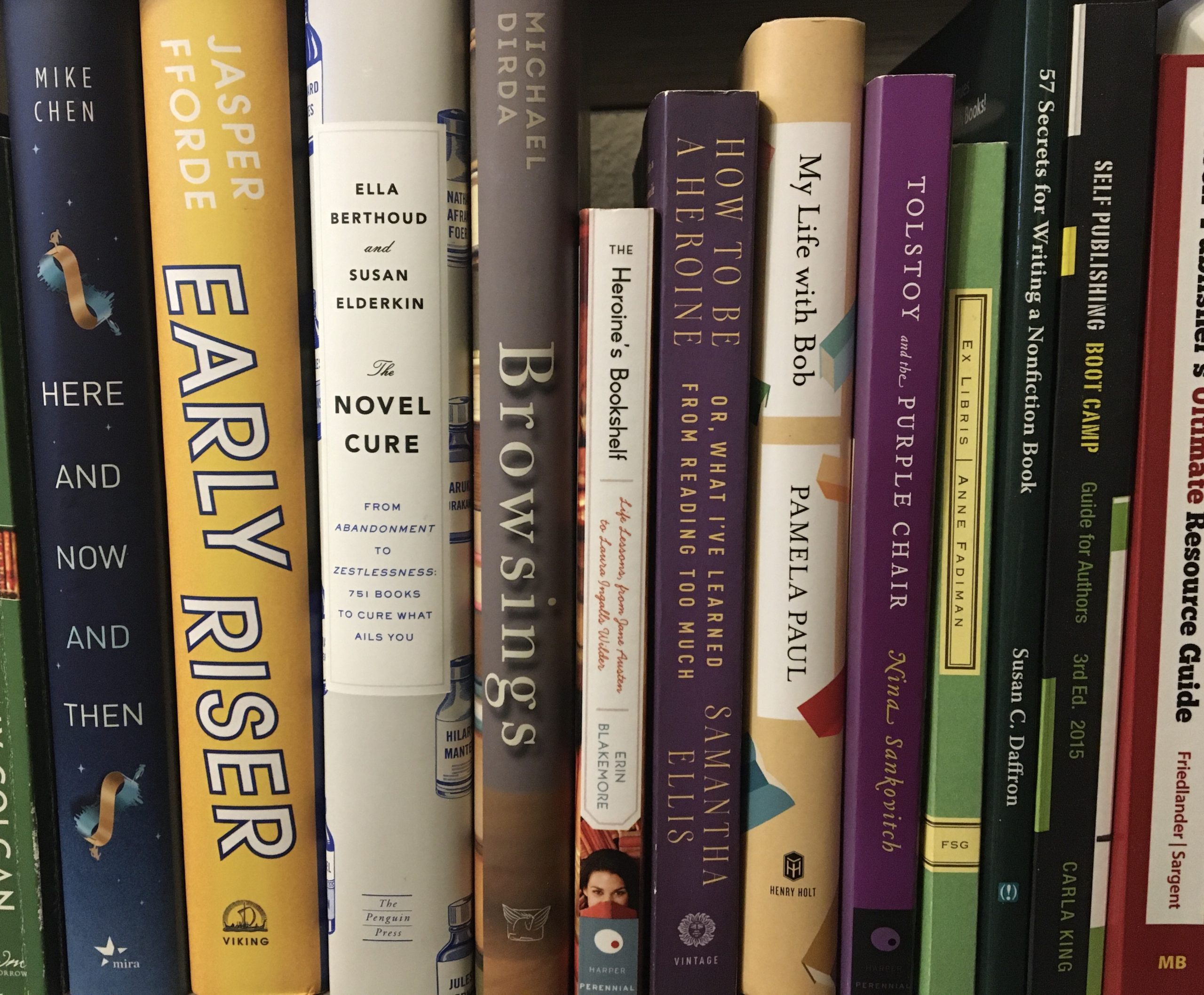
For years, novelist Nick Hornby had a monthly column in the Believer where he detailed the books he’d bought and the books he’d read (with minimal crossover in any given month), and combined short-term memoir and (award-winning) criticism. The columns were collecting in a series of books, including The Polysyllabic Spree, Shakespeare Wrote for Money, and Housekeeping vs. The Dirt.
Finally, there are just some great books of essays about books. The best, for my money, is Anne Fadmian’s Ex Libris: Confessions of a Common Reader, but my TBR still includes:
- My Life With Bob: Flawed Heroine Keeps Books of Books, Plot Ensues
- The Heroine’s Bookshelf: Life Lessons from Jane Austen to Laura Ingalls Wilder
- How To Be a Heroine: Or, What I’ve Learned from Reading Too Much
12) Develop an appetite with an ice cream sample.
No matter how many recommendations you get, sometimes, you just have to sample the material to know if it’s a good fit.
One trick is picking a specific page number, say page 53, and checking out the writing style without any preconceived notions of the book. If that random page appeals, it’s a good sign. We’re not spending much time in brick & mortar bookstores these days, though, so another option is the “Look inside the book” feature at Amazon, which allows readers to read introductions, tables of contents, and sample chapters to get a sense of whether a book is a good fit.
It can be difficult to find a compelling non-fiction book, especially for professionals with so many buzz-wordy titles vying for their attention. For them, there are online services that allow you to sample books by getting summaries of the material.
Next time, we’ll be looking in-depth at sites like Sipreads, 12 Minutes, Read It For Me, Blinkist, and more to help you get a birds’-eye-view of important non-fiction titles and find the books most worthy of you investing your reading minutes.
Until then, happy reading!



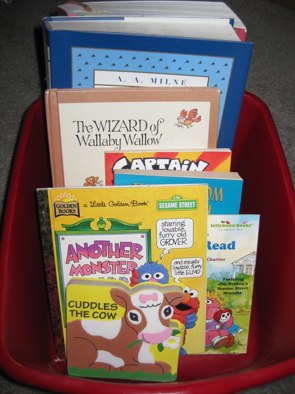



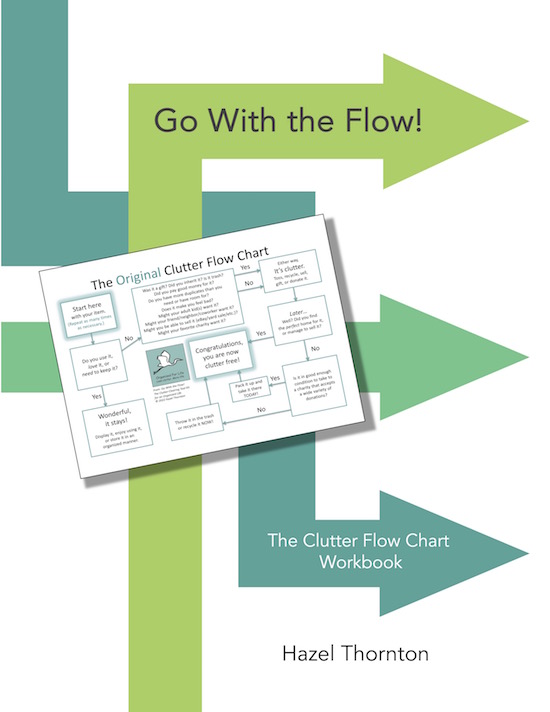
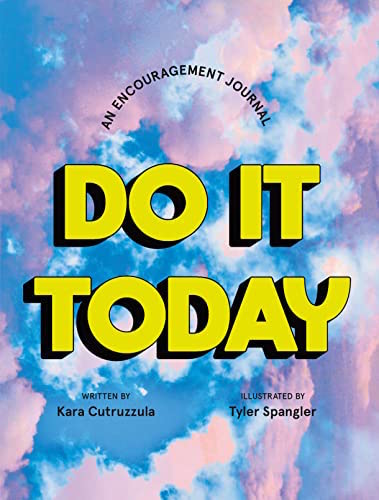

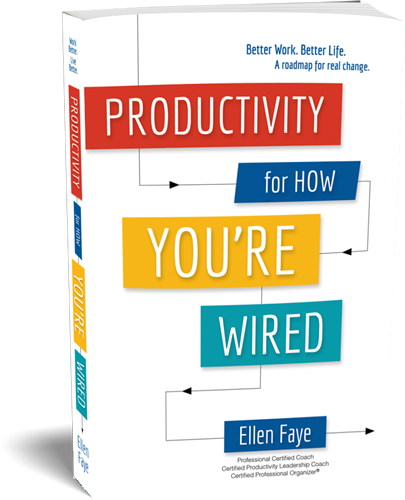
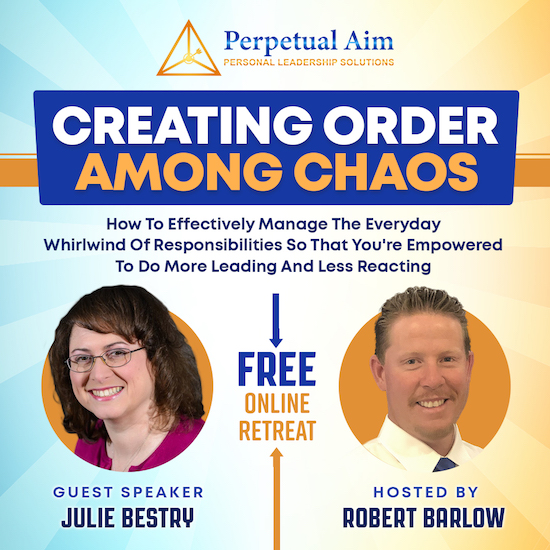

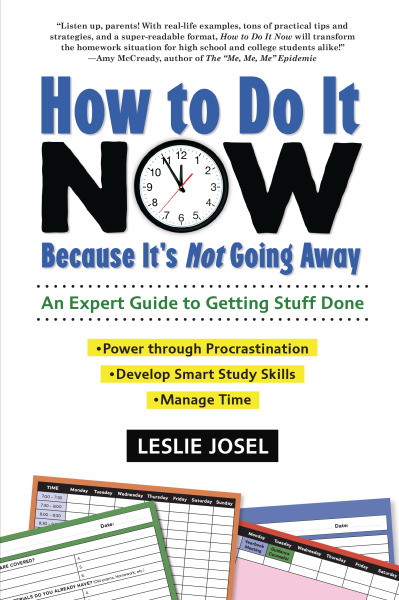



Follow Me